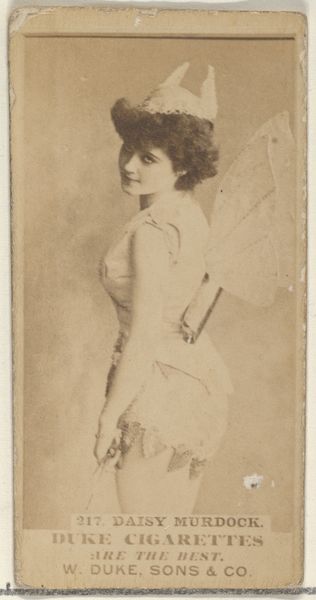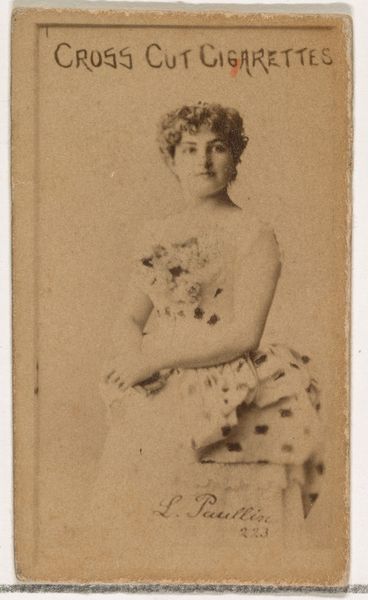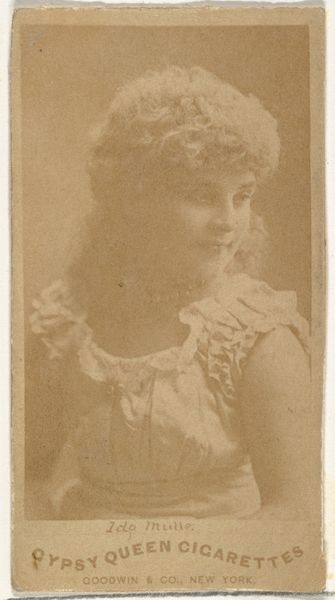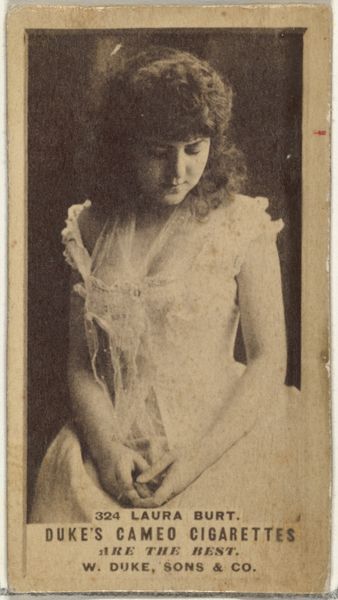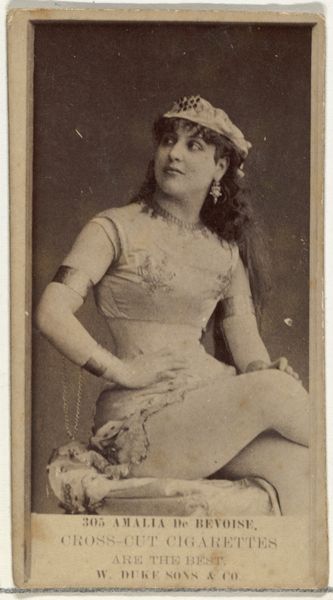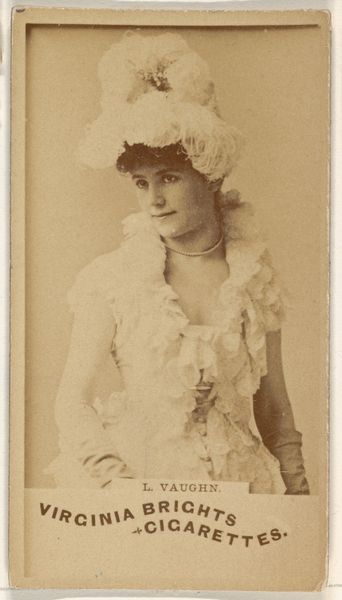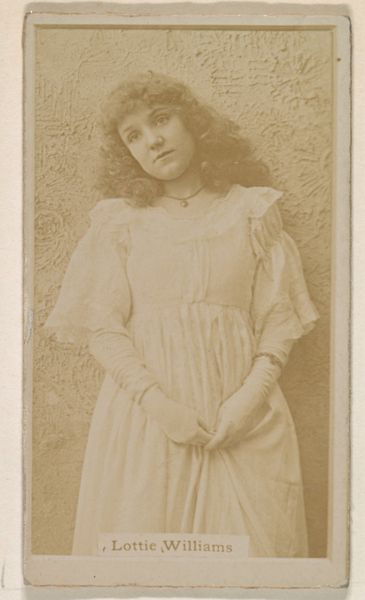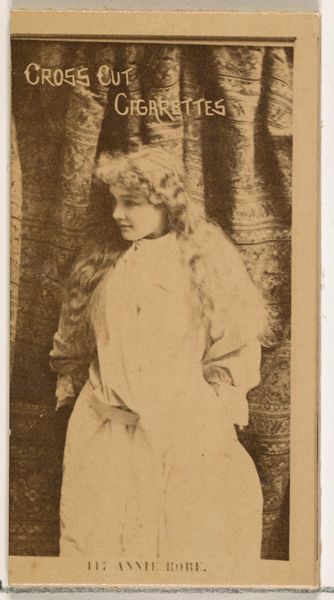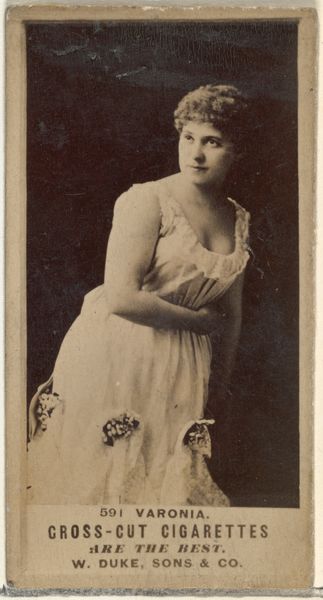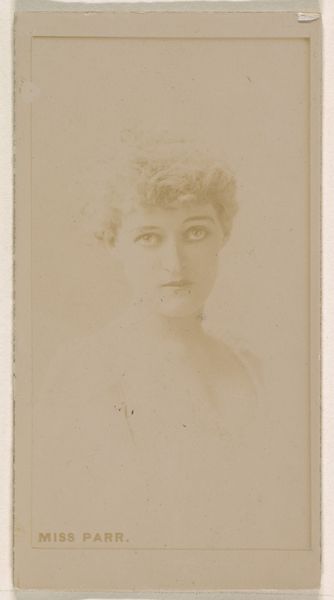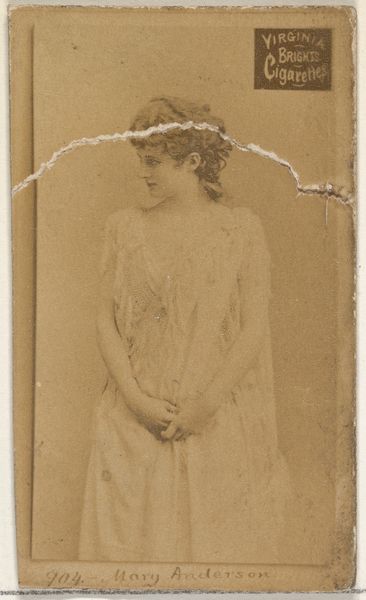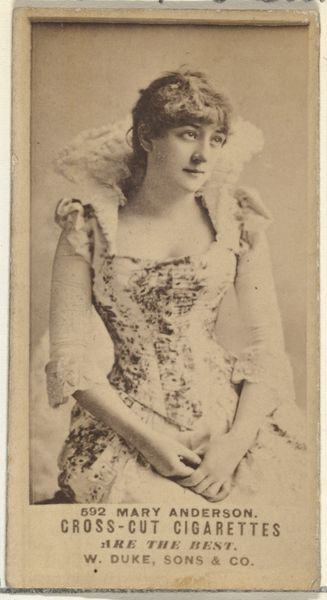
Jennie Williams, from the Actors and Actresses series (N171) for Gypsy Queen Cigarettes 1886 - 1890
0:00
0:00
print, photography
#
portrait
# print
#
photography
#
historical photography
#
portrait reference
#
19th century
Dimensions: sheet: 2 11/16 x 1 3/8 in. (6.9 x 3.5 cm)
Copyright: Public Domain
Curator: This is a photographic print from around 1886 to 1890, titled "Jennie Williams, from the Actors and Actresses series" and it was produced by Goodwin & Company for Gypsy Queen Cigarettes. It's currently housed here at the Metropolitan Museum of Art. Editor: The composition immediately strikes me. The light and shadow create a soft focus, drawing your eye straight to the sitter’s delicate features and intricate coiffure. The tonal range is exquisite for what essentially is a commercial object. Curator: Exactly. Beyond its visual appeal, this portrait speaks volumes about the cultural landscape of the late 19th century. Cigarette cards like these became incredibly popular, reflecting the rising consumer culture and serving as miniature galleries for the masses. These cards featured actors, athletes, and other figures, popularizing representations of women and idealizing them in new ways. Editor: I'm drawn to the delicate balance of tones—the nuanced gradients in the dress against the simple background. It adheres to traditional portraiture in its framing, but then it also abstracts those traditions in ways to make it interesting. The choice of this photographic process—the use of sepia tones—serves to soften what would otherwise be a sharp, almost journalistic representation. Curator: Indeed, the photograph itself has its own cultural value now. Representations like this of Jennie Williams allowed for the propagation of particular ideals. And not only that: we have to see it against the backdrop of early advertising techniques. Tobacco companies deployed imagery such as this as a seductive tactic—one which often targeted women as consumers. Editor: You’re right—we have to keep that dual reading in mind: what the artist accomplished in rendering the sitter as a figure versus the more nefarious, or perhaps manipulative, motives behind the piece's creation and use. Still, let’s return to the technique itself—her gaze, directed off to the right of the image, is subtle but direct. This is very effective—the use of negative space draws you in to what the figure may be contemplating. Curator: Right, because her gaze implies the world beyond her, or at least the implication of that world. These visual details were strategically produced in conjunction with the other aspects you noted. In that regard, what do you take away as being particularly powerful about it now, after discussing it more deeply? Editor: I continue to find the interplay between the sharp, almost crystalline details and the soft, painterly quality intriguing. The artist clearly mastered working in tonal arrangements to flatten out what could have been a less emotionally nuanced rendition. Curator: Yes. What I find is just how layered and interwoven these early media representations were, reflecting social change even in these fleeting commercial formats.
Comments
No comments
Be the first to comment and join the conversation on the ultimate creative platform.
